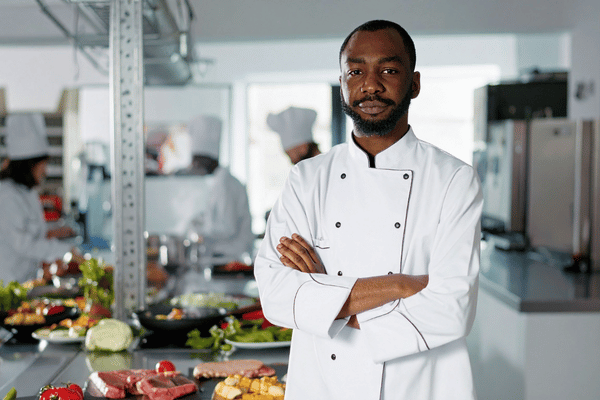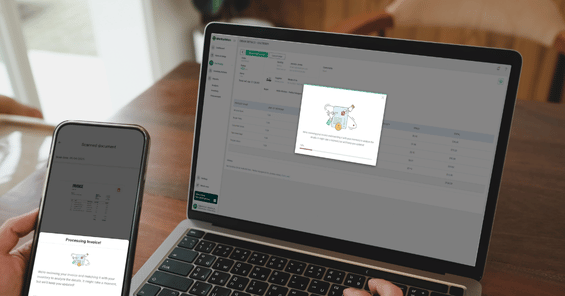

How to Control Food Cost in a Restaurant
Facing escalating food costs and struggling with waste management in your restaurant? Learn five proven strategies to effectively control food expenses, from reducing spoilage to negotiating with suppliers, without sacrificing quality or guest experience.
You’re no stranger to the problem of food waste. After labor, food is one of your greatest costs involved in operating a restaurant. Compounding the problem, the price for wholesale food increased 3.4% just in the past year, a jump we haven’t seen since 2011. While many managers who struggle with how to control food cost in a restaurant raise their menu prices or reduce their staff to balance their budget, there are better ways to manage your food costs.
The Ultimate Guide to Restaurant Success: Optimizing Operations, Maximizing Profits, and Building a Loyal Customer Base
🔓 Unlock the secrets to restaurant success with actionable strategies for optimizing operations, maximizing profits, and building a loyal customer base.

1. Reduce Spoilage
Food goes bad much faster than other goods, making it all too easy to pour money down the drain if you don’t use it before it spoils. To combat spoilage, take regular inventory to stay on top of inventory needs and minimize food waste. If you know what’s in the pantry, you can use what’s on hand and scale back on items that sell less frequently. Performing frequent inventory has other advantages as well. If food isn’t getting used, you can create a recipe to feature it as a daily special. For example, a surplus of zucchini could be turned into zucchini fritters or a casserole and promoted as a special. Encourage the host and wait staff to recommend the special as well. Employing a first in, first out strategy can help prevent waste as well. If employees neglect to rotate older food items from the front to the back, they will go bad before patrons can order them. Even the most popular items can fall victim to spoilage without proper monitoring. Using this strategy can keep the kitchen well stocked with fresh ingredients and ensure you don’t waste money on food that doesn’t get eaten.
2. Eliminate Unnecessary Waste
Several seemingly harmless behaviors can also contribute to excessive food waste. For example, if your staff isn’t aware of your restaurant’s food waste issue, they may not be as careful as they could be during prep. What may seem like an insignificant amount of waste can add up to quite a lot over time. Train staff on minimizing waste during prep and using as much of the food as possible. Controlling portion size is also critical to reducing waste. While patrons expect a decent sized meal, by gauging how much the average customer eats, you adjust meal sizes accordingly and cut down on serving more than a customer can eat. Creative use of leftover food can also save on costs. For example, make croutons and bread crumbs out of stale bread and specialty soups using shredded leftover chicken. Finding smart ways to use leftovers can help you squeeze the most value out of the food in your kitchen. If you aren’t sure where food waste is coming from, make a chart to track the following:
- Food waste as a result of incorrect orders
- Burnt food
- Spilled food
- Spoiled food
- Food not eaten by customers due to large portion sizes
Once you identify the source(s) of the waste, you can implement changes to reduce it, such as training kitchen staff on proper cook times or incorporating software that ensures orders are recorded correctly.
3. Participate in Prep Work
While your job might be primarily in the office rather than the kitchen, getting involved in food prep work can help control overall food costs for the restaurant. When you see that, for example, ordering deboned, skinless chicken breasts cut to size is much more expensive than ordering a whole chicken and prepping it in-house, you can save money on food simply by investing more time in the preparation step. Other examples include purchasing whole heads of lettuce instead of chopped lettuce and ordering hamburger meat in bulk versus pre-shaped patties. Before making these changes, however, consider the labor costs involved. It may not be worth it to debone, skin, and portion a whole chicken, but chopping up lettuce is not labor intensive.
4. Price the Menu Appropriately
Increasing the menu prices to counterbalance a bloated food budget may seem like an easy way to overcome escalated food costs, but in the long run, this strategy isn’t the most effective.. Menu prices have a huge impact on your restaurant’s bottom line. Elevating menu prices may turn off regular patrons and negatively impact profit margins. When setting menu prices, consider the following:
- Direct and indirect costs, such as the cost of ingredients as well as the perceived value of the food
- Labor costs to prepare the food
- Overhead costs, such as decorations and marketing
- Competitor pricing
- The type of service the restaurant provides (i.e. casual, fine dining, etc.)
5. Negotiate with Suppliers
Another way to control food costs in the restaurant industry is to negotiate with food suppliers. If you have a good rapport with a supplier, you can often ask for a discount or get your preferred supplier to price match a competitor. And while buying in bulk can save you money, those savings become moot if the food spoils before the restaurant can use it. Ask your supplier if they are willing to deliver bulk orders in several shipments over time to keep costs down without wasting food. Eliminating food waste is a significant priority for restaurant managers, but it can be difficult to pinpoint the source of the problem. MarketMan helps restaurants simplify ordering while eliminating waste.

Elevate your restaurant's efficiency with MarketMan's advanced inventory management software. Automate inventory processes, control food costs, and streamline back-of-house operations to focus on what truly matters—your guests. MarketMan empowers restaurateurs with insights to reduce waste and drive success. Book a demo today to discover the difference MarketMan can make for your business!
Author
Contributors
If you have any questions or need help, feel free to reach out
Don't miss out on maximizing your restaurant's profits! Calculate your ROI with MarketMan
Join over 18,000 restaurants and get the hottest restaurant tips delivered to your inbox
You may also be interested in
Ready to get started?
Talk to a restaurant expert today and learn how MarketMan can help your business






